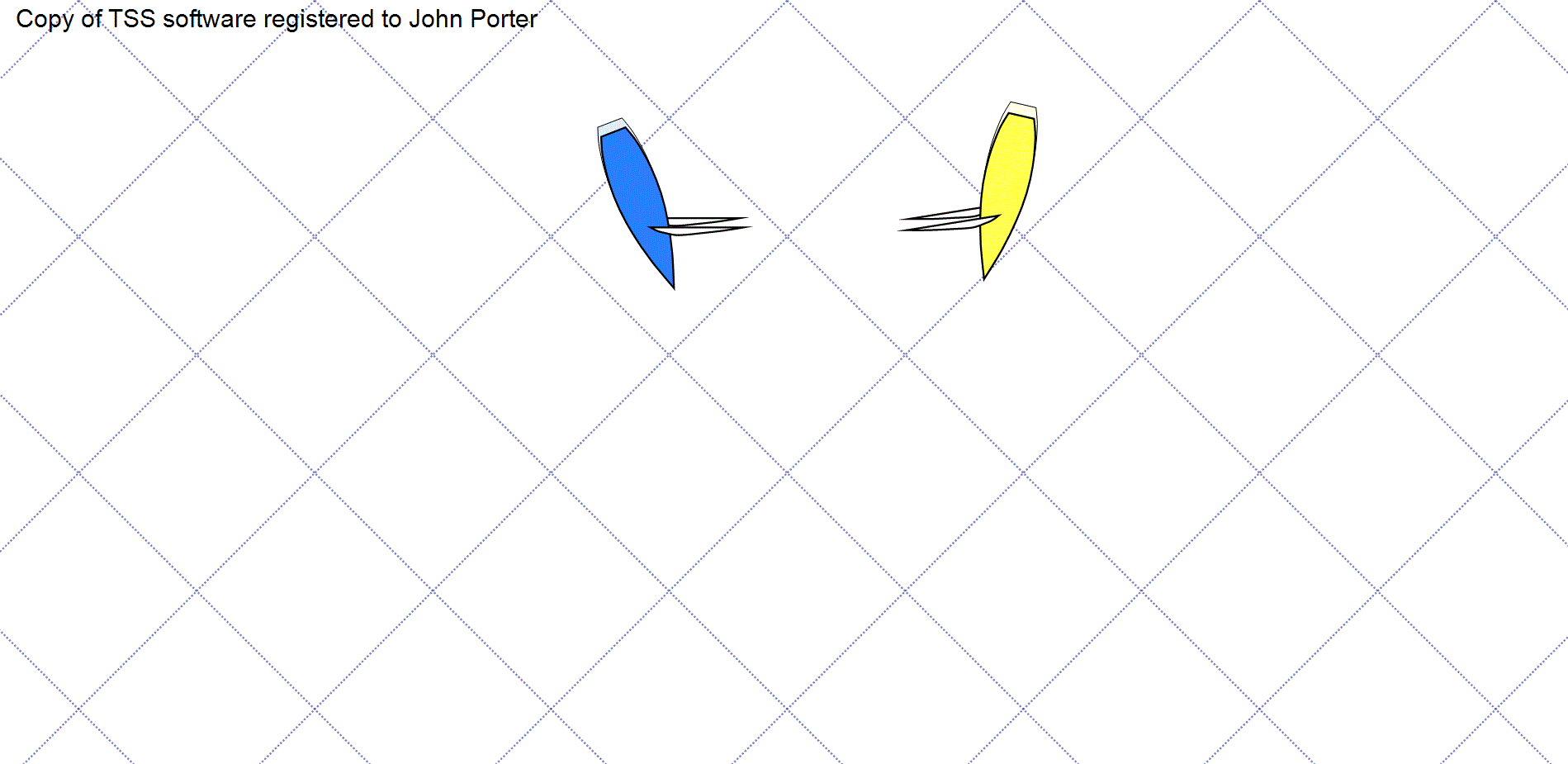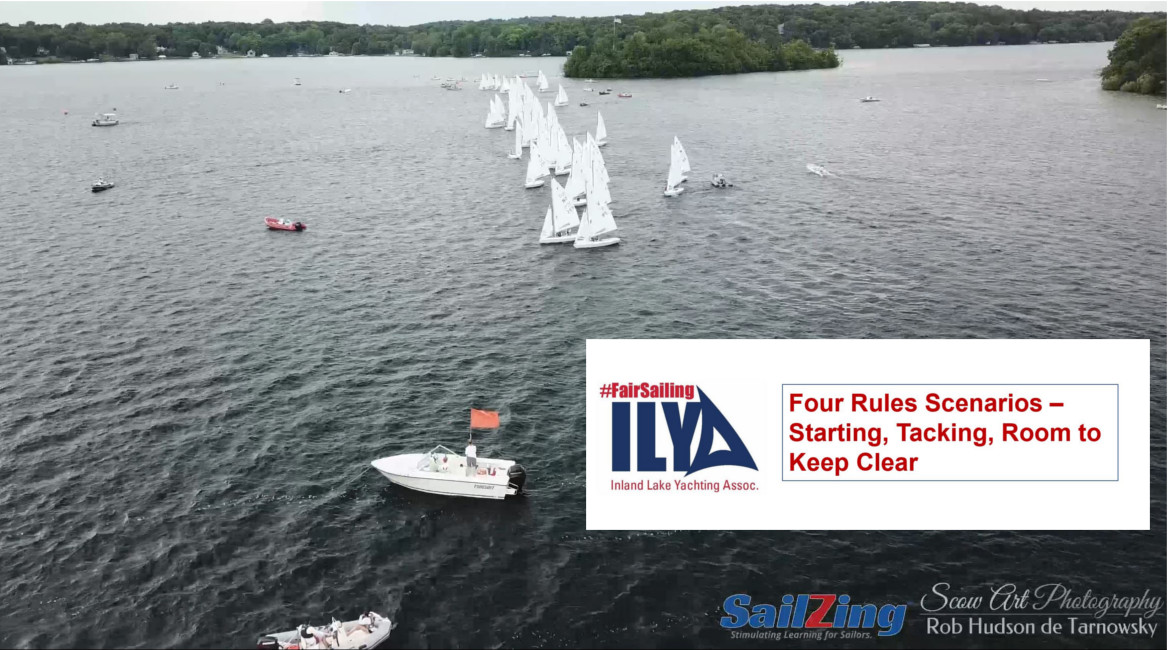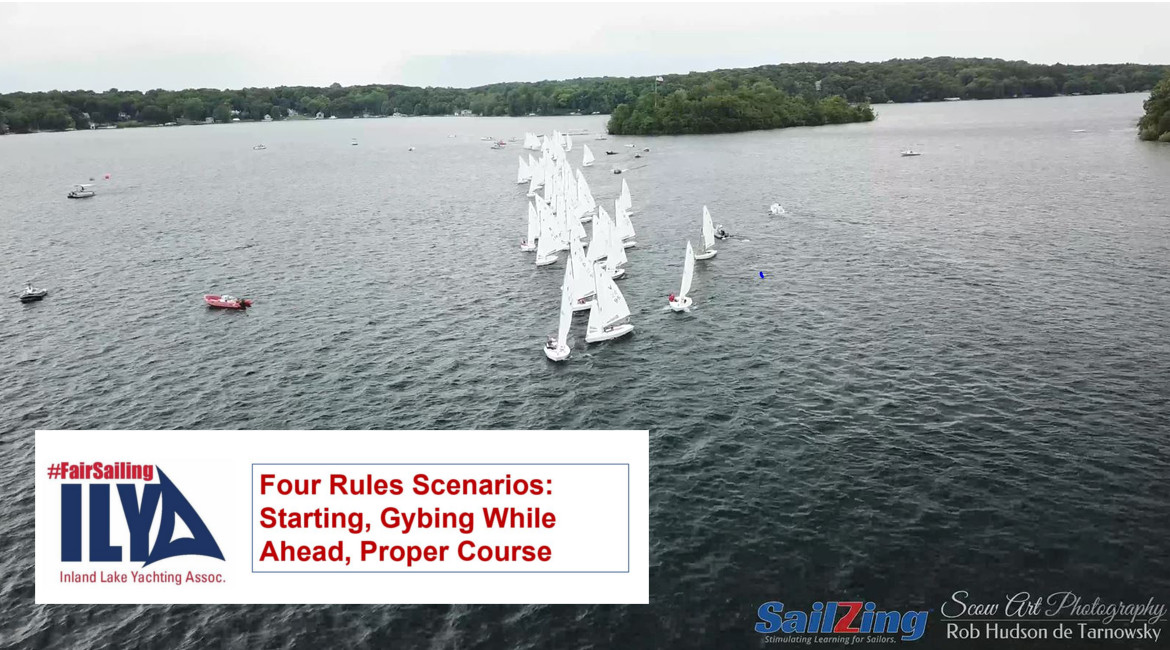Rule 10 – On Opposite Tacks is the first rule in Part 2 of the Racing Rules of Sailing (RRS). This post covers what you need to know about Rule 10, with video, animation, and questions and answers.
In 2018, the Inland Lake Yachting Association (ILYA) and SailZing, LLC partnered on a Fair Sailing initiative. As part of this initiative, SailZing worked with the ILYA and UK Sailmakers to develop a series of articles on the rules. With the rules changes in 2021, SailZing is updating these articles and adding video summaries.
Our thanks to UK Sailmakers for generating the animated scenarios.
Racing Rules of Sailing, Part 2
RRS, Part 2, is titled “When Boats Meet.” Part 2, Section A covers the concept of Right of Way, and states the following:
“A boat has right of way over another boat when the other boat is required to keep clear of her. However, some rules in Sections B, C and D limit the actions of a right-of-way boat.”
The rules in Part 2, Section A describe which boat has the right of way in four situations. In this article, we’ll cover the first rule in Section A: Rule 10, On Opposite Tacks and the definitions for words in italics that are defined in RRS. We’ll also cover several scenarios to illustrate the application of Rule 10.
Rule 10 – On Opposite Tacks
“When boats are on opposite tacks, a port-tack boat shall keep clear of a starboard-tack boat.”
Definitions
Tack, Starboard or Port. A boat is on the tack, starboard or port, corresponding to her windward side.
Keep Clear. A boat keeps clear of a right-of-way boat:
(a) if the right-of-way boat can sail her course with no need to take avoiding action and,
(b) when the boats are overlapped, if the right-of-way boat can also change course in both directions without immediately making contact.
Rule 10 Scenarios
For each scenario, read the description, watch the animation, and decide your answer to the question. Then click the Answer link to check your thinking.
#1 – “I got scared”

Description: Blue and Green are sailing upwind and will collide if they maintain their courses. At about 1 boat length apart, Blue had not reacted in any way. Green started to tack to avoid a collision, after which Blue bore off. There was no contact. Blue protested Green, claiming that Green had changed course, breaking Rule 16. Green protested Blue for not keeping clear.
Which boat(s) should promptly take penalty turns? Answer
#2 – “Tack or cross?”

Description: Red and Green are sailing upwind. Red asks permission to cross, and Green replies, “cross.” Green then ducks Red. A third boat, not involved in the situation, protests Red for not keeping clear of Green.
Which boat(s) should promptly take penalty turns? Answer
#3 – “Coming together downwind – by the lee”

Description: Blue and Yellow are sailing downwind by the lee, with the wind coming over the same side of the boat that the sail is on. The boats collide, with no damage. Both boats protest, each claiming the other violated Rule 10.
Which boat(s) should promptly take penalty turns? Answer
#4 – “Overtaking”

Description: Red and Green are sailing downwind, with Green overtaking Red. Before contact, Red hailed “overtaking boat, keep clear.” Green alleges that Red did not keep clear.
Which boat(s) should promptly take penalty turns? Answer
#5 – “Upwind-Downwind”
Description: Red is sailing upwind and Green is sailing downwind. Green bears off to avoid a collision with Red. Red alleges that she is the leeward boat. Green alleges that Red did not keep clear.

Which boat(s) should promptly take penalty turns? Answer
Related Content:
Cases for Rule 10 – from World Sailing Casebook – these are abstracts of the cases. See the Casebook for more information.
World Sailing Racing Rules of Sailing




